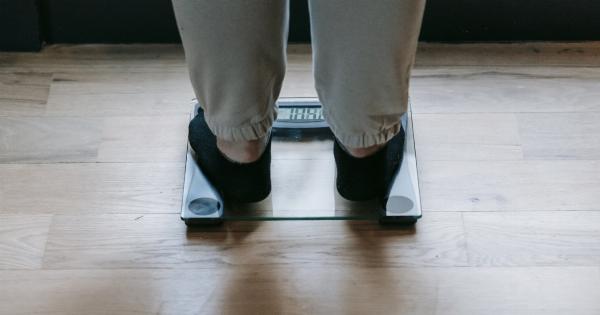Excess body weight and obesity are known to increase the risk of various chronic health conditions, including cardiovascular disease, diabetes, and cancer.
However, one lesser-known health concern associated with carrying extra pounds is vaginal fibrillation. Vaginal fibrillation is a condition characterized by irregular and rapid contractions of the vaginal walls, which can lead to discomfort, pain, and sexual dysfunction.
Understanding the link between unnecessary pounds and vaginal fibrillation is essential for maintaining women’s reproductive health and overall well-being.
What is Vaginal Fibrillation?
Vaginal fibrillation, also known as vaginal muscle spasms or vaginismus, is a condition that affects the muscles in the vagina.
It causes involuntary contractions, tightness, or spasms, which can make sexual intercourse, gynecological exams, and even tampon insertion painful or impossible.
Obesity and Vaginal Fibrillation
Multiple studies have shown a clear association between obesity and an increased risk of vaginal fibrillation. Excess weight places additional stress on the pelvic muscles, including those that control the vaginal walls.
The extra strain on these muscles can result in their involuntary contractions, leading to vaginal fibrillation. Moreover, obesity is often accompanied by inflammation in the body, which can further contribute to muscle spasms and discomfort in the vaginal area.
Hormonal Imbalances
Obesity is frequently linked to hormonal imbalances, most notably elevated levels of estrogen. Estrogen plays a significant role in regulating muscle function and tone, including the muscles in the vaginal walls.
When estrogen levels are disrupted, it can lead to muscle spasms and abnormal contractions, increasing the risk of vaginal fibrillation. Additionally, hormonal imbalances can affect overall sexual health and desire, compounding the negative impact on women’s well-being.
Inflammatory Factors
Adipose tissue, or fat cells, produce inflammatory substances known as adipokines. These adipokines can trigger chronic inflammation in the body, which can affect various tissues and organs.
In the case of vaginal fibrillation, inflammation in the pelvic region can directly impact the muscles and nerves in the vaginal area, leading to spasms and discomfort. Moreover, chronic inflammation can disrupt the normal functioning of hormones and other regulatory systems, aggravating the risk of vaginal fibrillation.
Pregnancy and Obesity
Pregnancy is a time when the body undergoes significant changes, both hormonally and physically. Carrying excess weight during pregnancy can exacerbate these changes and increase the risk of vaginal fibrillation.
Hormonal shifts, combined with the additional strain on the pelvic muscles, can lead to muscle spasms and discomfort in the vaginal area. This highlights the importance of maintaining a healthy weight before and during pregnancy to minimize the risk of vaginal fibrillation and related complications.
The Impact on Sexual Health
Vaginal fibrillation can have a profound impact on a woman’s sexual health and overall well-being.
The pain and discomfort associated with the condition can lead to a decrease in sexual desire, avoidance of sexual activities, and strained relationships. Additionally, the emotional toll of feeling sexually inadequate or experiencing pain during intimate moments can lead to anxiety, stress, and a diminished quality of life.
It is crucial for healthcare providers and individuals to address the link between excess weight and vaginal fibrillation to promote sexual well-being and healthy relationships.
Preventive Measures and Treatment Options
To decrease the risk of vaginal fibrillation, it is essential to maintain a healthy body weight through regular exercise, a balanced diet, and lifestyle modifications.
Losing excess weight can alleviate strain on the pelvic muscles and reduce inflammation, minimizing the likelihood of vaginal muscle spasms. Additionally, engaging in pelvic floor exercises, such as Kegels, can help strengthen the vaginal muscles and improve their control and flexibility.
If symptoms of vaginal fibrillation persist or worsen, it is important to consult with a healthcare professional.
Treatment options for vaginal fibrillation may include physical therapy, pelvic floor rehabilitation, medication to relax the muscles, and counseling to address any emotional factors contributing to the condition. Each individual’s treatment plan should be tailored to their specific needs and circumstances.
Maintaining Reproductive Health and Overall Well-being
Recognizing the link between excess weight and vaginal fibrillation is crucial for women’s reproductive health and overall well-being.
By taking proactive measures to maintain a healthy weight, address hormonal imbalances, and manage inflammatory factors, women can reduce their risk of developing vaginal fibrillation. Moreover, seeking timely treatment and support can help alleviate symptoms and improve sexual health, leading to a better quality of life.































